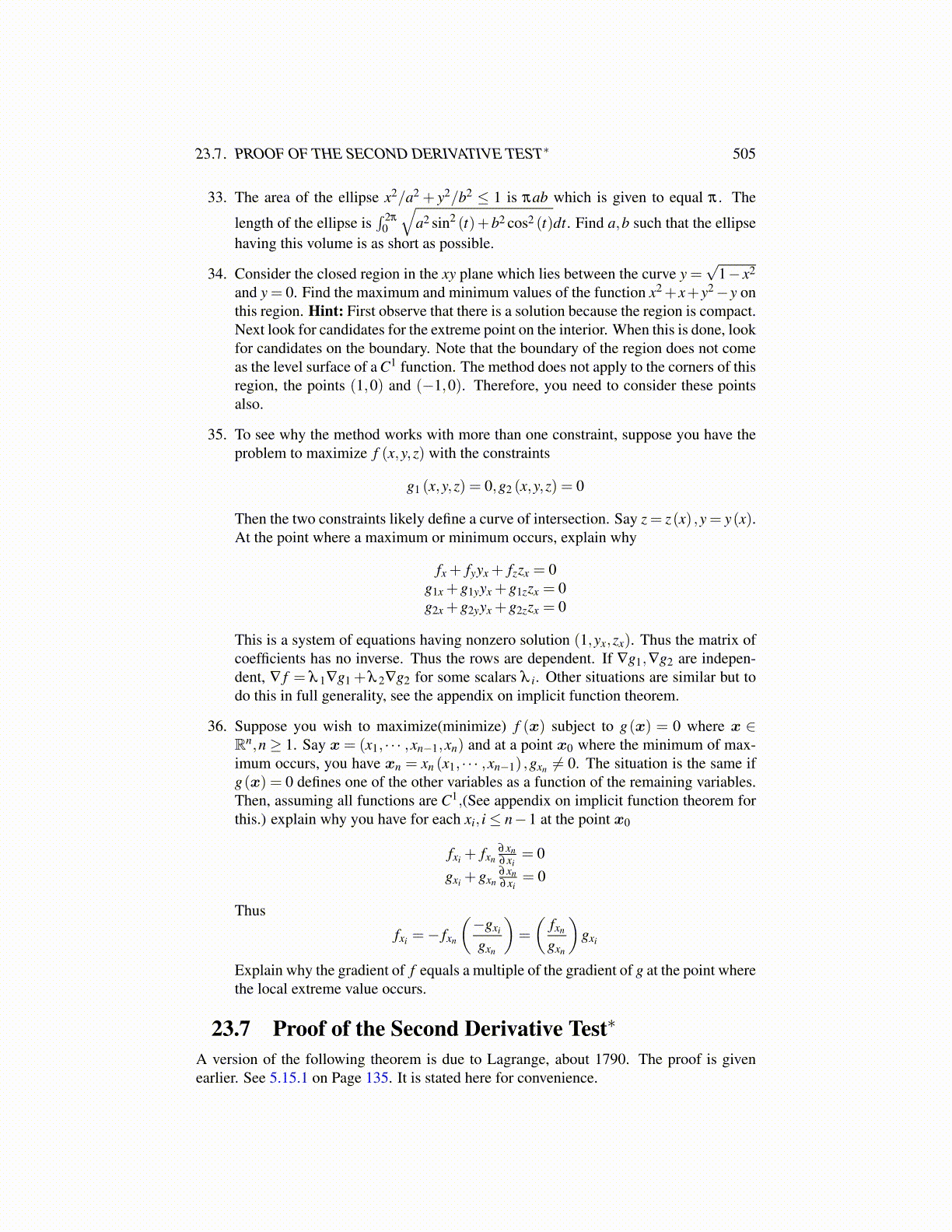
23.7. PROOF OF THE SECOND DERIVATIVE TEST∗ 505
Proof: Since ∇ f (x) = 0, formula 23.4 implies
f (x+v) = f (x)+12vT H (x)v+
12(vT (H (x+tv)−H (x))v
)(23.6)
and by continuity of the second derivatives, these mixed second derivatives are equal and soH (x) is a symmetric matrix. Thus, by Theorem 19.8.6, H (x) has all real eigenvalues andcan be diagonalized with an orthogonal matrix U . Suppose first that H (x) has all positiveeigenvalues and that all are larger than δ
2 > 0.
uT H (x)u= uTUDUTu= (Uu)T D(Uu)≥ δ2 |Uu|2 = δ
2 |u|2
By continuity of H, if v is small enough,
f (x+v)≥ f (x)+12
δ2 |v|2 − 1
4δ
2 |v|2 = f (x)+δ
2
4|v|2 .
This shows the first claim of the theorem. The second claim follows from similar reasoningor applying the above to − f .
Suppose H (x) has a positive eigenvalue λ2. Then let v be an eigenvector for this
eigenvalue. Then from (23.6), replacing v with sv and letting t depend on s,
f (x+sv) = f (x)+12
s2vT H (x)v+
12
s2 (vT (H (x+tsv)−H (x))v)
which implies
f (x+sv) = f (x)+12
s2λ
2 |v|2 + 12
s2 (vT (H (x+tsv)−H (x))v)
≥ f (x)+14
s2λ
2 |v|2
whenever s is small enough. Thus in the direction v the function has a local minimum atx. The assertion about the local maximum in some direction follows similarly.